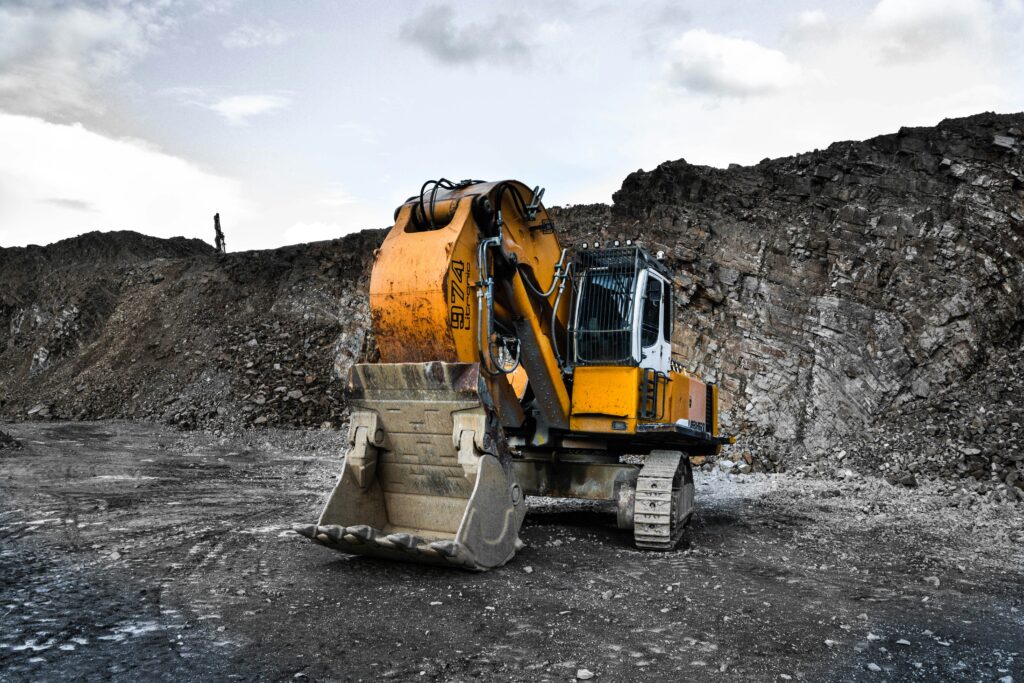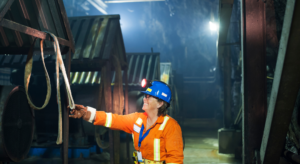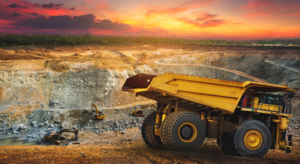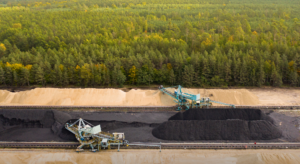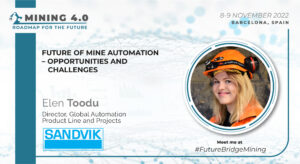The mining industry is long known for major water consumption and generating contaminated wastewater. So, effective water treatment becomes crucial. It is one of the major ways to minimize environmental impact. Additionally, it will guarantee legal observance and encourage environmentally friendly mining methods. Membrane techniques have shown promise in the treatment of water. These technologies can offer a robust separation capability. So, it enables the removal of several contaminants like heavy metals, etc. This article will dive into various membrane technologies for mining water treatment. We will also see its underlying mechanisms and their advantages/limitations. So, let’s begin.
Pressure-Driven Membrane Processes
Pressure is put to push water through a partially permeable membrane in pressure-driven processes. Additionally, it sorts the contaminants according to size and charge. The range and effectiveness of these techniques have significantly raised interest in mining water treatment.
Microfiltration (MF) and Ultrafiltration (UF)
The two low-pressure membrane treatment techniques are UF and MF. They are effective in eliminating suspended particles, colloids, and macromolecules. Furthermore, the pores of MF membranes are usually between 0.1 and 10 micrometers in size. Furthermore, the holes of UF membranes are much smaller. It measures between 0.001 and 0.1 micrometers. Furthermore, these processes are commonly employed as preventative measures. This is to get rid of bigger pollutants before moving on to other treatment phases.
Mining wastewater can benefit from the efficient removal of suspended particles, bacteria, and other particulate matter by MF and UF membranes. It also reduces the strain on subsequent treatment steps. However, they might not be efficient in getting rid of the following:
- Dissolved ions,
- Heavy metals,
- Or even low molecular weight chemical compounds
Nanofiltration (NF)
NF can remove multivalent ions, dissolved salts, and organic compounds. This is given they are of the weights 200-1000 daltons. The reason for this is that it works at higher pressures than MF or UF. Divalent ions can also be removed from the waste of mining using these membranes. They reflect calcium, magnesium, and sulfate in it. Additionally, the diameter of their pores ranges from 0.5 to 2 nanometers.
NF has shown promise in the treatment of acid mine drainage and the removal of heavy metals. It also shows effectiveness in treating the salinity reduction of mining effluent. Additionally, it can be applied to the elimination of organic pollutants found in mining effluents. It includes pesticides and dyes. However, organic waste and mineral scaling may cause NF membranes to foul. As a result, it shows the requirement for appropriate pre-treatment and techniques for cleaning.
Reverse Osmosis (RO)
High-pressure RO membranes use special membranes that allow certain things to pass through. These membranes pull out molecules and ions from solutions. This includes some like chloride and salt. RO membranes reject the majority of dissolved particles and pollutants. The reason is that their pores are smaller than one nanometer. So, it allows water molecules to flow through selectively.
In mining water treatment, RO frequently comes in use. This is to remove heavy metals, desalinate water, and purify process water. Furthermore, it is capable of efficiently treating a variety of mining wastewater. It includes tailings pond water, process water from mineral processing activities, and acid mine drainage. Nevertheless, RO systems need high operating pressures and are vulnerable to membrane fouling. This suggests that we need to regularly clean or replace the membrane and implement efficient pre-treatment.
Electrically-Driven Membrane Processes
Electrically driven membrane technology uses an applied electric potential to separate charged species from mining wastewater. It is one of the most effective membrane water treatment technologies. So, let’s know about a few such processes ahead:
Electrodialysis (ED)
Mining wastewater can have its dissolved ions removed selectively using ion-exchange membranes. This is through an electrically driven membrane technique called ED. The process results in the migration of negatively charged anions and positively charged cations through the respective membranes. So, it entails applying an electric potential across alternating cation and anion exchange membranes.
ED has shown great results in the treatment of acid mine drainage. It is also effective in the removal of heavy metals and the saline reduction of mining wastewater. Moreover, it is appropriate for applications where selective ion removal is required. This is because it can remove particular ions selectively. Fouling and scaling problems, however, could demand regular membrane replacement and cleaning in ED systems.
Membrane Capacitive Deionization
MCDI reflects a new technique. It combines the concept of separation of membrane with capacitive deionization. Furthermore, it employs an electrosorption technique. Porous carbon electrodes and ion exchange membranes extract dissolved ions from mine wastewater. Introducing an electric potential creates deionized water because ions adsorb onto the carbon electrodes.
MCDI has several benefits, including as low energy usage, great efficiency in removing salt, and low-pressure operation. Moreover, it can be applied to mine effluent to remove heavy metals, soften it, and desalinate it. Nevertheless, MCDI technology is still in the research and development phase. It is therefore necessary to address membrane fouling and electrode regeneration difficulties. This is before they can be extensively utilized in mining applications.
Mining Water Treatment: Membrane Bioreactors
MBRs offer a comprehensive method for handling wastewater from mining. It combines membrane filtration with biological treatment processes. So, let’s know about the techniques and technologies used in water treatment in detail:
MBR Configuration and Operation
An MBR system combines a membrane filtering unit (often MF or UF membranes) with a biological treatment process (anaerobic digester or activated sludge system). Furthermore, membrane filtering removes biomass and suspended particles from the treated water. Moreover, the biological process breaks down organic matter and pollutants.
Depending on the particular needs and treatment goals, MBRs can function in a variety of configurations. This includes submerged or side-stream designs. Their benefits include:
- Reduced environmental impact,
- Improved effluent quality,
- And the capacity to store and repurpose precious biomass for additional processing or resource retrieval.
MBR Applications in Mining Water Treatment
MBRs have successfully done treatment of numerous types of mining wastewater. Acid mine drainage, tailings pond water, and process water from mineral processing facilities are all included. They can also effectively eliminate organic waste, suspended particles, and occasionally heavy metals. This is by combining membrane separation with biological degradation.
Additionally, engineers can design MBRs to incorporate specific treatment procedures. This is to focus on particular pollutants found in mining wastewater. This involves sulfate reduction, denitrification, & nitrification. The management of concentrated waste streams and membrane fouling, however, remain problems that need fixing. This will help MBR performance to be at its best in mining applications.
Mining Water Treatment: Emerging Membrane Technologies
Researchers and professionals in the sector are constantly investigating new membrane technologies and hybrid systems. This is to improve the effectiveness and sustainability of mining water treatment.
Forward Osmosis (FO)
FO is a membrane-based technique. It makes use of the osmosis phenomenon to separate water from contaminants. FO separates a highly concentrated draw solution from a feed solution (mine wastewater). This is by a semi-permeable membrane. Furthermore, the barrier propels the water molecules. This is because the two solutions’ osmotic pressures differ from one another. So, it therefore removes the impurities from the feed solution.
FO has several benefits, including its low energy usage, good pollutant rejection, and low operating pressure. Furthermore, it can be powerful with other procedures to build hybrid systems for mining water treatment. It includes membrane distillation or reverse osmosis. However, research and development for FO technology is still ongoing. Moreover, issues with draw solution control and membrane fouling must be resolved for proper application.
Membrane Distillation (MD)
MD is a thermally-driven membrane technique. It extracts water vapor from mine effluent using a hydrophobic microporous membrane. The method works by exploiting the difference in vapor pressure. This is between the feed solution and a colder distillate stream. It allows the water vapor to pass through the membrane in a specific way. It also keeps the impurities in the feed solution. MD has several benefits, including:
- The capacity to handle extremely salty or concentrated solutions,
- Low working temperatures,
- And strong rejection of non-volatile pollutants.
It can come in use in conjunction with renewable energy sources for sustainable mining water treatment. This includes solar or waste heat. Still, some problems require examination and resolution. It involves the need for an effective pre-treatment, limitations on heat transmission, and membrane fouling.
Biomimetic Membranes
Aquaporins and biological channels are two examples of natural systems. Membranes that imitate them are becoming increasingly common. Biomimetic membranes are the name given to these membranes. Furthermore, these membranes offer potential benefits. This is in terms of permeability, selectivity, and energy efficiency. It imitates the extremely efficient and selective water transport processes seen in living things.
Synthetic materials can come in handy to construct biomimetic membranes. They imitate biological membranes’ composition and characteristics. They can also be made with biomimetic water channels. Research is currently being going on to investigate the potential of these membranes for mining water treatment. Additionally, they have demonstrated encouraging results in desalination and water purification applications.
The potential for biomimetic membranes is great. However before they are widely used in mining applications, some issues must be resolved. It includes stability, fouling resistance, and large-scale manufacturing.
Membrane Integration and Hybrid Systems
Membrane methods are frequently combined with other procedures to create hybrid systems. These systems take advantage of their combined advantages for effective and thorough wastewater treatment. This is done to handle the various issues associated with mining wastewater.
Integration with Conventional Processes
Membranes serve as a polishing step following conventional treatment. It can also come in use in conjunction with coagulation, sedimentation, and filtering. It improves the overall performance.
Membrane-based Hybrid Systems
These systems integrate membranes with advanced oxidation, electrochemical, or adsorption processes. They also mix various membrane processes. For instance, Ozonation, UV/H2O2, and nanofiltration/RO can eliminate various pollutants and enhance the removal of organic compounds and heavy metals. This process uses less energy. It can also leave a less environmental impact. This is by integrating membranes with electrochemical processes like electrocoagulation.
To Sum Up
The commitment of the mining industry toward sustainability makes the adoption of water treatment solutions necessary. This is where membrane technologies for mining water treatment promise great results. These technologies with emerging innovations and hybrid systems offer a path for an efficient treatment and recovery. It also promises a reduced ecological impact.
If you want to know about more such technologies and strategies for sustainable mining, the 5th Energy Transition and Emission Reduction for the Metals and Mining Industry Summit is just for you. It takes place in Helsinki, Finland, on June 11–12, 2024. The event is a valuable opportunity to gain insights from industry leaders and network with others to stay ahead of the curve. So, register right away!

